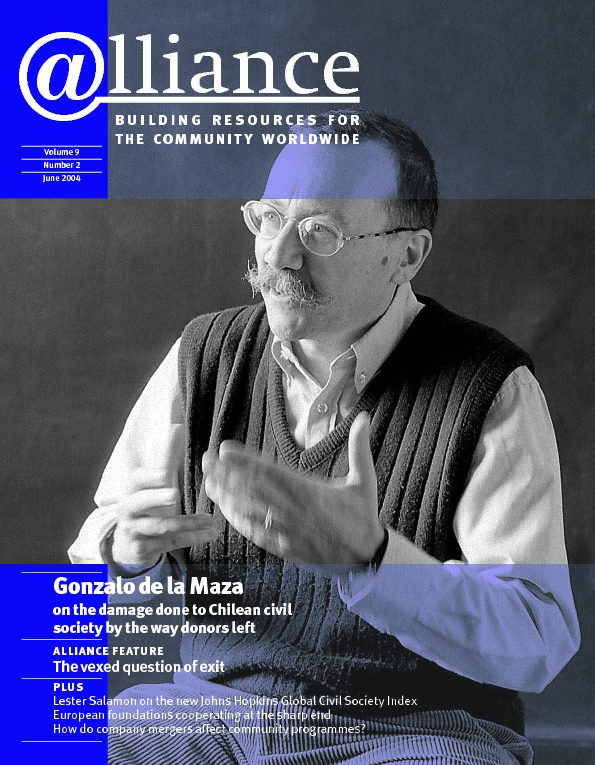We live in an era of performance and accountability. Increasingly, citizens, consumers and investors are demanding proof that their taxes, purchases and investments are really effective. Civil society is hardly immune from these expectations. To date, however, the civil society sector has lacked a convincing and reliable way even to demonstrate its progress, let alone gauge its impact.
Judgements about its health and development have therefore had to rely on sketchy hunches and subjective guesstimates. The new Johns Hopkins Global Civil Society Index will begin to fill this gap.
With the publication this coming summer of Global Civil Society: Dimensions of the Nonprofit Sector Volume II, the civil society sector will gain a new tool for measuring its progress and demonstrating its capacity and impact in countries around the world.
Developed in cooperation with my colleague, Wojciech Sokolowski, the Johns Hopkins Global Civil Society Index (GCSI) is an effort to pull together the significant body of data that has recently become available on the civil society sector around the world through the Johns Hopkins Comparative Nonprofit Sector project and other efforts, and to express it in a meaningful and coherent way. Several features of this index are worth emphasizing:
- It focuses on the core of the civil society concept – the formal and informal associations that engage citizen energies in pursuit of public purposes.
- It seeks to meet basic social science norms of index construction, which stress the need for objective measures as well as conceptual clarity, comparability and utility.
- It incorporates multiple dimensions, and multiple indicators for each dimension, to give equal weight to the diverse forms that civil society takes in different places.
More specifically, the GCSI measures the level of development of the civil society sector along three basic dimensions: (1) capacity, or the level of effort the sector mobilizes; (2) sustainability, or the ability of civil society to survive over time; and (3) impact, or the contribution that civil society makes to social, economic and political life.
To capture the complexity of the civil society sector, each of these dimensions is measured with a number of different indicators. Thus, sustainability is assessed in financial terms, in terms of the sector’s popular support, and in terms of the legal environment in which it operates. Each country’s ‘score’ on each indicator is then computed as a percentage of the maximum among all countries for which data are available. The resulting country scores are then averaged across the various indicators to get each country’s score on each dimension. These dimension scores are then averaged for each country to produce a composite GCSI score.
The table below reports the results of this index construction for the 15 countries that scored the highest on the composite index among the 34 countries to which we have so far applied it. Several features of these results are worth noting:
- The US does not top the index. Both the Netherlands and Norway score higher.
- The index captures the multiple dimensions of civil society. Countries with small civil society sectors as measured in terms of paid employment (eg Norway and Sweden) nevertheless score quite high because the index takes into account volunteer activity, informal movement activity, and expressive as well as service functions.
- No country achieves a score of 100 on any dimension of the GCSI or on the index as a whole. This index should therefore not foster complacency.
- The index demonstrates the varying levels of civil society development around the world. With a maximum value of 74, a minimum score of 29, and an average score of 40, the index should serve to stimulate efforts to promote civil society. Now, however, we have a way to measure how successful those efforts prove to be.
No doubt, the Hopkins GCSI will not be the last word on how to measure the progress of civil society around the world. On the contrary, we hope it will spur others to improve on what we have done as well as leading to improvements in the basic data on which we can all rely. The recent publication of a new UN Handbook on Nonprofit Institutions in the System of National Accounts should make an important contribution to this by making the collection of systematic empirical data on the civil society sector, philanthropy and volunteering a more explicit obligation of national statistical agencies. But countries must be persuaded to adopt the Handbook and implement its procedures.
Civil society is too important to operate any longer in the dark. Hopefully, by indexing its progress from place to place and over time in a coherent and reliable way, we can focus more attention on its status and encourage its development. That, at any rate, is our wish.
For a full account of the Hopkins Global Civil Society Index, see Lester M Salamon and Wojciech Sokolowski, ‘Measuring Civil Society: The Johns Hopkins Global Civil Society Index’, in Lester M Salamon, Wojciech Sokolowski and Associates (forthcoming 2004) Global Civil Society: Dimensions of the nonprofit sector Bloomfield, CT: Kumarian Press. For information on how to order, see p3.
Lester Salamon is Director of the Center for Civil Society Studies at the Johns Hopkins Institute for Policy Studies. He can be contacted at lsalamon@jhunix.hcf.jhu.edu



Comments (0)